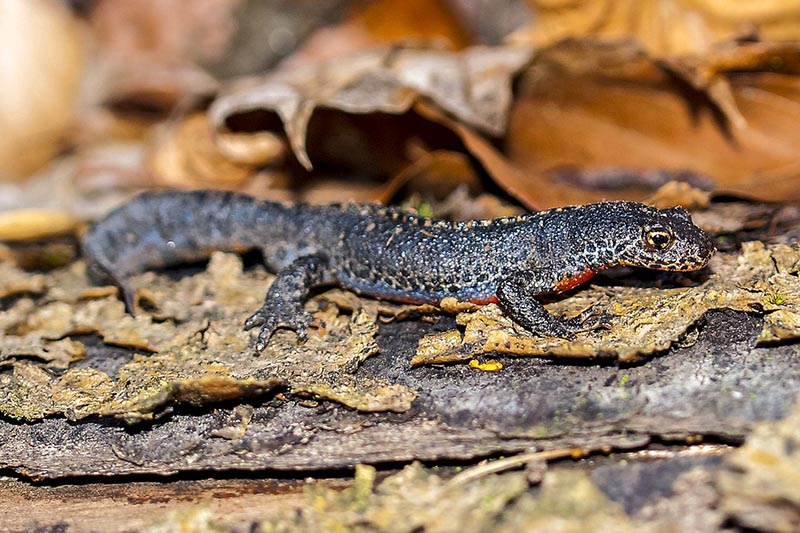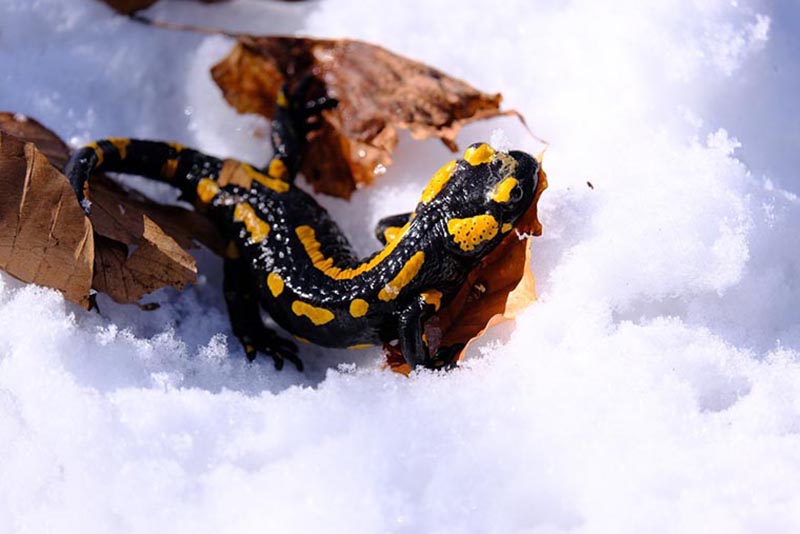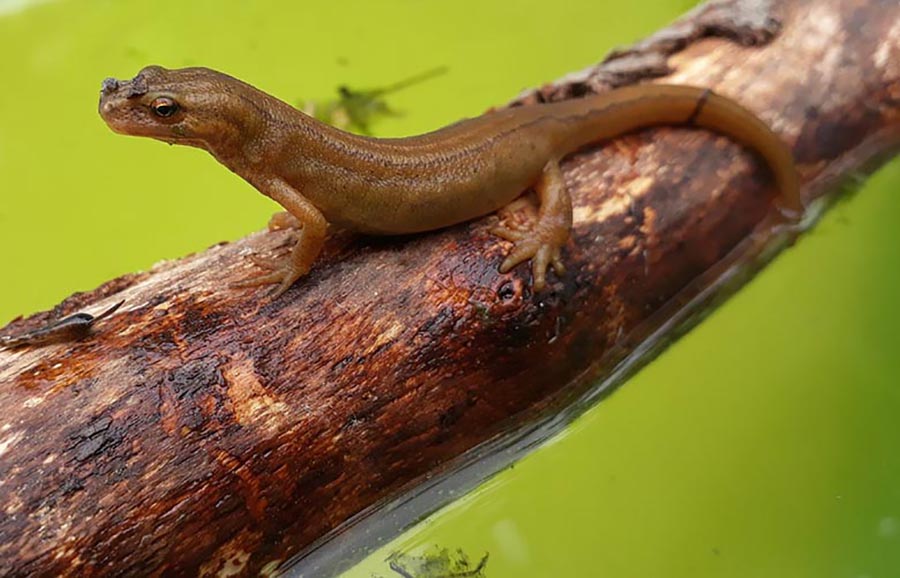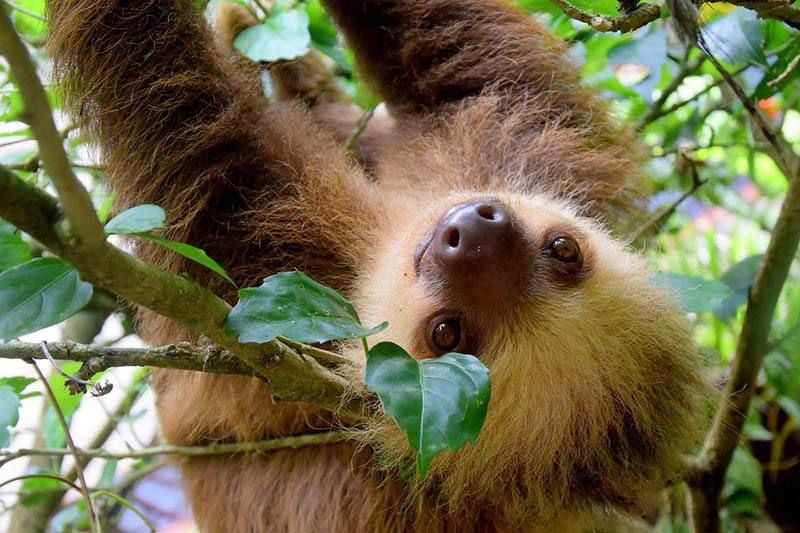Newts are found both in Europe and in America. These little creatures look similar to lizards, but in fact, they are very different from them. Land newts are also sometimes called salamanders.
- There is no such definition as a newt in biology. This group includes different representatives of tailed amphibians, which at the same time belong to different families. However, despite the biological differences, there are also similarities between them.
- The most widely known newts are those that scientists include in the family of true salamanders also known as Salamandridae. These are quite large animals that can grow up to 8 inches (20 cm) in length!
- These amphibians have one interesting feature: some species can lead an almost completely aquatic and almost completely terrestrial lifestyle. The difference is huge, and it often can be found within individual populations, even if these animals belong to the same species.
- If you see a comb along the back of a newt, it means that you are looking at a male specimen, since females do not have this organ. However, male specimen also don’t have it constantly, they grow it only in the spring, by the beginning of the breeding season, and it disappears afterward.
- All land newts (salamanders) are affected by a chromosomal anomaly. Exactly 50% of their offspring always die at the embryo stage because of this. However, this doesn’t prevent them from reproducing, since the female specimens lay quite a lot of eggs.

- The females of these animals always wrap the eggs in the leaves of aquatic plants suitable for this purpose when breeding. This protects the eggs from predators and the sunlight, which can harm the caviar.
- Newts aren’t afraid of cold weather, they simply hibernate for the winter, and in a variety of conditions: under the ice in a pond, for example, or under some sort of a snag in the forest. But, being cold-blooded creatures, they lose mobility when the temperature drops. They can easily fall asleep anywhere if a sharp cold snap catches them in the wrong place.
- Pseudotritons, common in North America, actually belong to the lungless salamanders. These amazing animals don’t have lungs at all! Once upon a time, their ancestors came out of the water to land, and in the course of evolution, they had lungs. However, later then they returned to the aquatic environment again, getting rid of them. When they decided to move to land for the second time, their lungs didn’t evolve again, so the pseudotritons learned to breathe atmospheric air with the entire surface of their skin.
- The rough-skinned newt, Taricha granulosa of the Pacific Northwest produces more than enough tetrodotoxin to kill an adult human, and some Native Americans of the Pacific Northwest used the toxin to poison their enemies.
- All species of these animals are either crepuscular or nocturnal, and during the day they hide in shelters. There can be only one exception here: they can migrate even during the daytime during the breeding season.
- Newts of most species molt from time to time, and some of them can molt more than one time in one warm season. Usually, they eat their old skin immediately after molting, it so that the nutrients contained in it don’t go to waste.
- The offspring of newts go through several metamorphoses during development. Larvae hatch from eggs, and in 3-4 months they move to land and lose their gills.
- If the larvae of these animals develop in a pond with steep banks, where it is impossible to get to land, they continue to lead an aquatic lifestyle. In this case, their gills are not lost but are preserved in adult form.
- Newts are found in Asia, northern Africa, North America, and Europe. They are carnivores eating frogs’ eggs, tadpoles, slugs, worms, and other insects. Some types of newts display yellow, orange, and other bright color combinations. A female can have as many as 400 eggs.
- Newts eat mosquitoes and other harmful insects in significant numbers, and they significantly reduce the number of their population in their habitats.

- These animals have powerful regenerative abilities. In case of danger, they can drop their tail like lizards do, and then grow a new one. It also happens that the old tail is not completely discarded, and grows again, but the new one still begins to grow. The result is a two-tailed newt. By the way, they can regrow even lost limbs and some internal organs.
- Most male newts become more noticeable during the mating season. They grow combs and change their color to a brighter one to attract the females’ attention. Although this is risky: it’s easier for them to accidentally attract the attention of some predators when they are bright.
- Most newt species have a lifespan of about 10 to 20 years. They are usually less than 8 inches (20 cm) in total length, and many are less than 4 inches (10 cm).
- The main predators of young newts and the eggs (and of most other pond life) are fish. Larger predators such as foxes, grass snakes, and herons eat the adults.
- Newts are protected in Europe. Laws are prohibiting the killing, destruction, and selling of them. While the species is by no means endangered, IUCN lists insufficient data to assess two of the subspecies.


